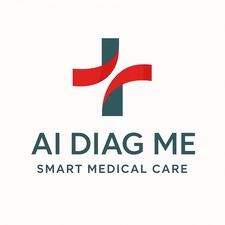Diabetes is a chronic disease that affects millions of people worldwide. It is characterized by an excessively high concentration of sugar (glucose) in the blood. This condition, also known as hyperglycemia, occurs when the body does not produce enough insulin or does not use it effectively. Insulin is an essential hormone that regulates blood sugar levels. A good understanding of this pathology is the first step towards effective management.
What are the Causes and Risk Factors?
The causes of diabetes vary considerably depending on its type. It is therefore crucial to distinguish the main forms of the disease to understand the mechanisms involved.
Type 1 Diabetes
Type 1 diabetes is an autoimmune disease. This means that the patient’s immune system mistakenly attacks and destroys the insulin-producing cells in the pancreas. Consequently, the body can no longer produce this hormone at all. The exact causes of this autoimmune reaction remain unknown, but genetic predispositions and environmental factors (such as certain viral infections) appear to play a role. It often develops during childhood or adolescence.
Type 2 Diabetes
This is the most common form of diabetes. In this case, the body develops insulin resistance. Initially, the pancreas compensates by producing more insulin, but it eventually becomes exhausted. Several risk factors are clearly identified:
- Overweight and obesity.
- Lack of physical activity.
- An unbalanced diet.
- A family history of diabetes.
- Age (risk increases after 45 years).
Gestational Diabetes
This form of diabetes appears specifically during pregnancy. Hormonal changes can make cells less sensitive to insulin. Although it usually disappears after childbirth, it increases the mother’s risk of developing type 2 diabetes later in life.
What are the Symptoms and Signs?
Symptoms can be progressive or appear suddenly. However, some signs are common to different types of diabetes. Particular vigilance is recommended if you observe:
- Intense thirst and dry mouth.
- Frequent urination.
- Unexplained fatigue.
- Unintended weight loss.
- Excessive hunger.
- Blurred vision.
- Frequent infections or slow wound healing.
In the case of type 2 diabetes, symptoms can be so subtle that they go unnoticed for years.
How is the Diagnosis Established?
The doctor confirms the diagnosis of diabetes mainly through blood tests. The most common method measures fasting blood glucose, i.e., the blood sugar level after a night without eating. A level greater than or equal to 1.26 g/L (or 7 mmol/L) on two occasions indicates diabetes.
Another important test is the measurement of glycated hemoglobin (HbA1c). This examination reflects the average blood glucose levels over the last three months. It not only allows for diagnosis of the disease but also for monitoring the effectiveness of treatment.
What are the Treatments and Management of Diabetes?
Management aims to maintain blood glucose within target values to prevent complications. Approaches vary depending on the type of diabetes.
For type 1 diabetes, treatment relies on daily insulin injections or the use of an insulin pump.
For type 2 diabetes, treatment often begins with lifestyle measures: dietary rebalancing, regular physical activity, and weight loss. If this is not enough, oral medications are prescribed. In some cases, insulin injections or other injectable medications become necessary.
Recent Scientific Advances in Diabetes
Diabetes research is extremely active. Recent advances, especially between late 2024 and mid-2025, focus on more personalized and less restrictive treatments. Researchers are exploring new classes of drugs, such as dual or triple receptor agonists (GIP/GLP-1/glucagon), which show promising results for weight and blood sugar control in type 2 diabetes. Furthermore, “artificial pancreas” or “hybrid closed-loop” systems for type 1 diabetes are becoming increasingly sophisticated. They connect a continuous glucose monitor to an insulin pump, thereby automating insulin delivery with greater precision and reducing the mental burden for patients. Finally, cell therapy, aiming to transplant insulin-producing cells, continues to undergo encouraging clinical trials.
Is it Possible to Reduce the Risk?
Prevention primarily concerns type 2 diabetes. Adopting a healthy lifestyle significantly reduces the risk. The most effective actions include maintaining a healthy weight, engaging in regular physical activity (at least 150 minutes per week), and a diet rich in fruits, vegetables, and fiber. These simple measures have a major impact on disease prevention. For type 1 diabetes, no prevention method currently exists.
Living with Diabetes
Managing diabetes daily requires organization and education. Blood glucose self-monitoring is a cornerstone of management. Patients must also learn to adapt their diet and treatment based on their physical activity and health status. Regular medical follow-up is essential to adjust treatment and detect potential complications (ocular, renal, nervous, cardiovascular). Patient associations offer valuable support for living better with the disease.
Frequently Asked Questions
Is diabetes hereditary?
There is a genetic predisposition, especially for type 2 diabetes. Having a diabetic parent increases the risk, but lifestyle plays a predominant role. For type 1, the genetic factor is present but less direct.
Can diabetes be cured?
Currently, it cannot be cured. However, treatments allow for very good control. In the case of type 2 diabetes, remission is possible, especially after significant weight loss, but monitoring remains necessary.
Does eating too much sugar cause diabetes?
Excessive sugar consumption does not directly cause type 1 diabetes. For type 2, it contributes to weight gain and obesity, which are major risk factors. An unbalanced diet is therefore indirectly involved.
Additional Resources
Discover AI DiagMe
- Our Publications
- Our Online Interpretation Solution: Don’t wait any longer to take control of understanding your blood tests. Understand your laboratory test results in minutes with our aidiagme.com platform; your health deserves this special attention!
